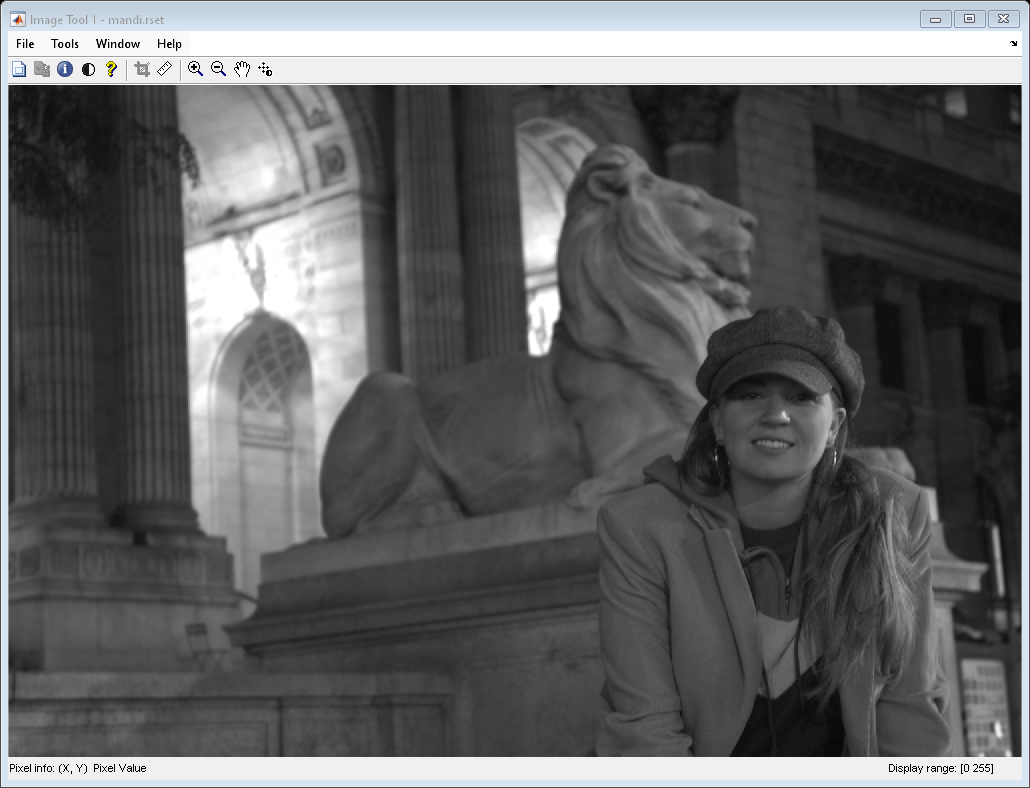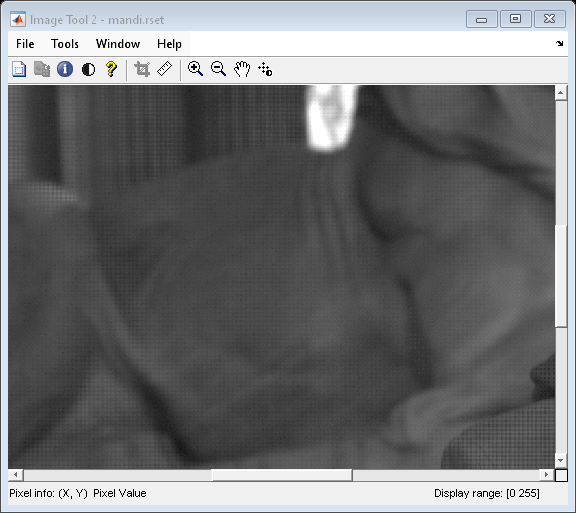rsetwrite
Create R-Set file from image file
Syntax
Description
rsetfile = rsetwrite(filename,rsetfilename)rsetfilename.
rsetfile = rsetwrite(adapter,rsetfilename)rsetfilename from an
ImageAdapter object, adapter. Use this syntax when
creating an R-Set file from a type of image file that is not TIFF or NITF.
Examples
Input Arguments
Output Arguments
Tips
rsetwritecreates an R-Set by dividing an image into spatial tiles and resampling the image at different resolution levels. The R-Set file contains a compressed copy of the full-resolution image data. You can use the Image Tool (imtool) to open the R-Set file and zoom in to view the tiles at a higher resolution. When you zoom out, the function displays tiles at a lower resolution. In this way, an R-Set file balances clarity of the image and memory usage for optimal performance.When creating an R-Set, a progress bar shows the status of the completion. If you cancel the creation process before it is complete, the function does not create an R-Set and returns an empty
rsetfile.rsetwritesupports NITF image files that are uncompressed and Version 2.0 or higher. This function does not support NITF files with more than three data bands or with floating-point data. Images with more than one data band are accepted if they contain unsigned integer data.You can create an R-Set from an image whose dimensions are smaller than the size of a single R-Set tile. However, the resulting R-Set file might be larger and take longer to load than the original file. The current size of a tile in an R-Set is 512-by-512 pixels.
Version History
Introduced in R2009a

